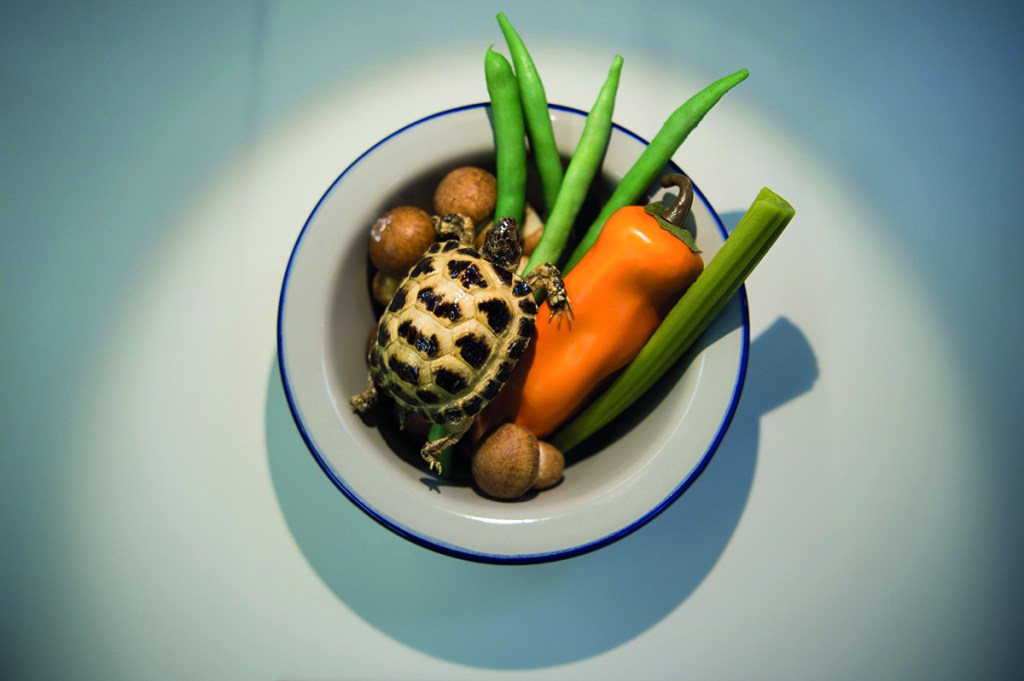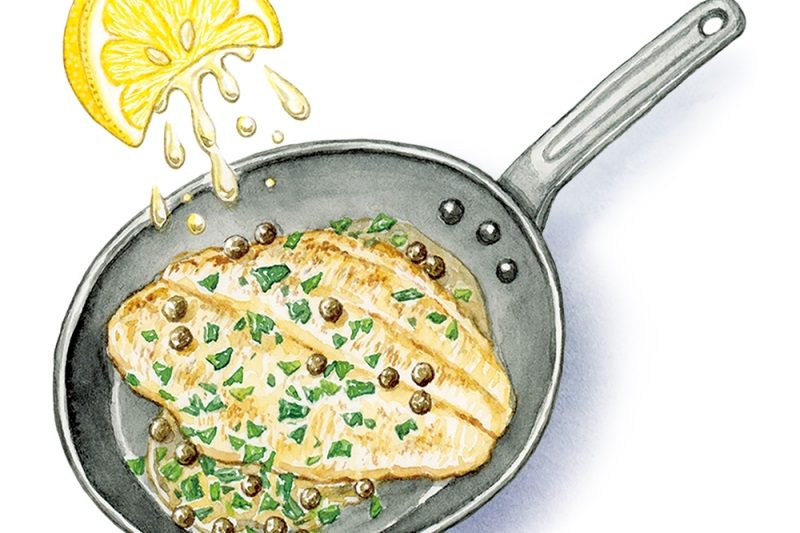Ah, autumn, season of mists and mellow soupfulness, as the poet Keats didn’t quite say. In southern England, where Keats was inspired to write his famous ode to summer’s red-and-golden aftermath, fall mists may stick around all day; but in New England, they burn off with the morning sun, giving way late in the day to heady breezes that blow clean through the soul.
It was Geoffrey Chaucer who brought the word autumn into the English language. As sure as ‘Aprill with his shoures soote’ leads ‘folk to goon on pilgrimages’, so October cries out for vigorous outdoor activity followed by autumnal soup.
The kind of soup you want on a fall day is the substantial stuff that keeps soul and body firmly glued together. None of your weedy, watery broths out of Chicken Soup for the Soul — proper fall soup is robust, ideally featuring squash, pumpkin, or carrots and ginger. Roasted red pepper or tomato bisque will do in a pinch, but
to capture the essence of season, the genus Cucurbita, the gourd-producing vine family from which both squash and pumpkin hail, fits the bill.
If the recipe admits the addition of generous dollops of butter or cream, so much the better. Cream, butter and their Parisian cousin crème fraîche are always welcome, but they are even more satisfying as the outside air turns crisp and cool. We’ve got to keep up our strength; who knows what winter will bring?
Squash soup is easy to make. First, select your squash; choose a firm, unblemished one that’s not too large. Secondly, take an afternoon off from work, or better yet start cooking this on a Saturday while the rest of the family is hard at work on outdoor fall cleanup. Once they’ve hauled all the garden furniture and terracotta planters to the potting shed, wrapped the rosebushes in burlap and straw and heaped all the dead branches and leaves in a large pile for burning,
they’ll be ravenous. This is the secret to five-star home cooking: first, starve the family.
Locate a small ax or handsaw in your garage, then attack the squash. Well, OK, you can probably manage with a sharp kitchen knife. Some schools of thought call for the peeling of the squash prior to cutting. You may like to chop it into manageable pieces before attempting to peel them. Flaying them with sharp words is not recommended since that can leave a bitter taste. Cut your gourd in half; avoid slicing through the tough stem. Scoop out the seeds and fiber with a large spoon. Then cut into pieces, toss in olive oil until lightly coated, and place on a baking sheet. You can season it with salt and pepper at this point, and add any other vegetables you’d like to include in the soup: a few carrots perhaps, sliced peeled apples, or a couple heads of garlic. For garlic, cut the top of the bulb off, leaving the cut edge of the cloves exposed and splash some olive oil over it. Roast everything in the oven on high heat for around three quarters of an hour, or until the largest pieces are tender.
As it cooks, take a moment to contemplate that many splendored compound, Soup, in its ontological essence. I find it’s much easier to contemplate the metaphysical aspects of life when other people are hard at work all around me, so if this is truly fall cleanup day with most of the family going gung-ho with rakes and shears in the back yard, it’s the perfect time to indulge in the contemplation of Being — but not Nothingness, lest your soup become, like the thought of Jean-Paul Sartre, nauseating. The kind of soup we’re aiming at is more in the Thomistic category of ‘that which pleases on being seen’, high in sweetness and light and positively sloshing with the metaphorical milk of human kindness.
It doesn’t take many postmodernists to spoil the broth, so it’s best to keep them out of the kitchen altogether. Just think how much better the world would be if Andy Warhol had simply done what it said on the Campbell’s Soup tin: ‘In a 4-quart pot, combine one can soup and one can water… Simmer over low heat, stirring often.’ But no, he had to get all creative and now Campbell’s Soup will never be the same. Consider, too, the horrible fish soup brought to the silver screen by Hitchcock in Frenzy. No, don’t look it up: you’ll be sorry.
Mind you, attempting fish soup can land even quite normal people in hot water. I’ve had several bad experiences with it, suffering severely on one occasion from an attempt at Niçoise rock fish soup, or soupa de pei de Nissa as the Provençaux call it. It’s a soup made from the many species of tiny fish that cluster around the rocks plunging down into the Mediterranean along the Côte d’Azur easy catches, tipped by the bucketful into the evening soup after a day’s fishing. They’re cooked whole, then ground in a food processer and pushed through a sieve to remove the bones.
Unfortunately, on the occasion on which I tasted this delicacy, either it had not been sieved or the mesh was insufficiently fine, leaving a grayish mass of sharp splinters that stabbed into the roof of the mouth. Out of politeness I downed a few mouthfuls, together with large amounts of bread which probably saved me from an agonizing death.
But enough painful reminiscing. As Wodehouse once said, ‘Memories are like mulligatawny soup in a cheap restaurant. It is best not to stir them.’
Back to our gourds. The oven timer is beeping, and the kitchen is filled with the delightful redolence of roast squash. It’s time to scrape the flesh of the squash off the skin and into the soup pot. Chicken broth is next; it’s always nice if you’ve got your own stock from the remains of a roasted chicken consumed earlier in the week, but store-bought will do too.
Turn on the heat and begin simmering as you add the remaining ingredients. If you roasted garlic, each clove will have turned into a gooey paste inside its skin and can be squeezed out into the mixture. Add moderate amounts of parsley, sage, rosemary and thyme, as the song says. I recommend grating in a little nutmeg. Cook for a few minutes and then blend it right in the pot with an immersion blender until the texture is smooth and it’s ready to serve.
‘Soup is cuisine’s kindest course,’ wrote the French master chef Louis Pullig de Gouy (1869-1947). ‘It breathes reassurance; it steams consolation; after a weary day it promotes sociability, as the five o’clock cup of tea or the cocktail hour.’ Call your family in from their labors and gather them around the table. Though weary in limb, they’ll be refreshed in body and mind by this kindest of foods.
This article is in The Spectator’s October 2020 US edition.

























